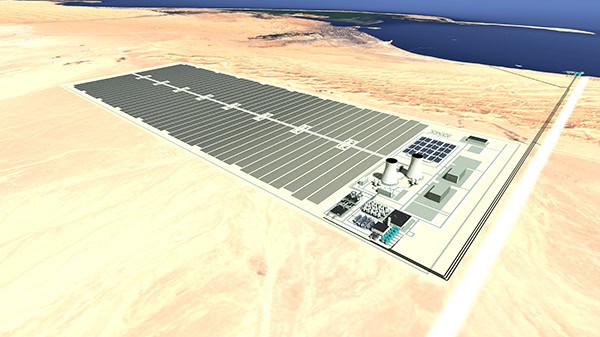THE German-Austrian industrial group Obrist Group is planning to build so-called gigaplants, a type of giant solar park that will not supply electricity, but green methanol. During production, more climate-damaging CO2 is removed from the atmosphere than is released during subsequent use, claims company CEO Frank Obrist.
As a result, the gigaplants are said to be CO2-negative and therefore climate-positive.
“Net zero is not enough, we are going for net negative,” says the inventor, entrepreneur and visionary: “In order to leave an intact climate for future generations, we need to recapture the carbon dioxide emitted through the extensive use of fossil fuels, i.e. remove it from the atmosphere.”
The Obrist Group recently entered into a global alliance with EWU Tech, DSE Green Technology Holdings with over 25 European technology partners and Global Enterprises to build gigaplants using the patented Obrist process. Projects worth billions are planned in Namibia, Egypt, Thailand and the US.
Obrist holds 190 patents that should make this possible. The United Nations supports the concept. The United Nations Industrial Development Organization (UNIDO) recently named the Obrist concept “The Most Promising Solution Award Winner in Energy Efficiency Category”.
Four million tons of methanol per gigaplant per year
The specifications of the planned gigaplants are impressive. Almost four million tons of methanol are to be produced per year on an area of around 280 square kilometers.
At today’s energy prices, this corresponds to a sales volume of around $4,3-billion per year. The annual operating costs are estimated at around $340 -million leaving a gross profit of almost four billion dollars a year.
The construction costs for a gigaplant, calculated at $18.6-billion, would therefore be recouped in less than five years, which corresponds to an annual return on capital costs of over 21%.
However, the high profitability is only possible if the plant is operated in the Earth’s sun belt, where solar power is available at a cost of just 0,88 cents per kilowatt hour due to the intensity of the sun.
These so-called electricity generation costs for the conversion of another form of energy into electricity are between 3 and over 5 cents for conventional solar parks, between just under 4 (onshore) and around 12 cents (offshore) for wind power plants, between 7 and 17 cents for biomass, between just under 8 and 13 cents for natural gas, between ten and 20 cents for hard coal and lignite and between 3.5 and 8 cents per kilowatt hour for nuclear power plants.
The Obrist concept generates electricity for one-third of the cost of the cheapest alternative method.
Low costs thanks to production in the desert
However, as electricity is difficult to store on a large scale and even more difficult to transport, it is “only” used for electrolysis in the gigaplant to produce hydrogen from water in the first step and methanol from this in the second step. Methanol is liquid at normal temperature and can be transported via all the transportation routes that already exist today for fossil fuels (pipelines, tankers, tanker trucks, etc.).















